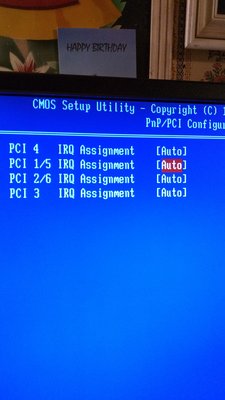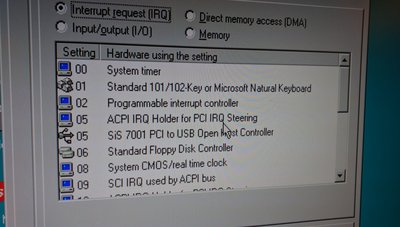First post, by Retromangia
Hey folks,
I just put the finishing touches on my new Retro Rig, and have a few questions on ACPI.
I'm just curious to find out what everyone's thoughts are on using ACPI with Windows 98 SE. I will re-install Windows If I have to disable it.
I ask this because I've read many articles stating it's better to disable it in BIOS. The only way to disable the use of ACPI in windows is to first turn it off in the BIOS, then re-install Windows again.
As of right now, I'm currently using it. Although i don't have any real problems, I've noticed in my system settings that I have MANY devices sharing IRQ's (see pic). EDIT - actually the pic doesn't show much, but there's about 4 shared devices using IRQ 11 as well.
I've also noticed my BIOS has many IRQ settings. Should I just leave them on Auto? (see pic)
I actually had to move my sound card from PCI Slot 5, up to Slot 4 otherwise the system would lock up during the Vortex 2 driver install. Does this mean I had conflicting IRQ's somewhere?
If anyone out there could just take a second to shed some light on ACPI and IRQ's I would GREATLY appreciate 😀
Here's my specs:
-Gigabyte GA-8SRX mobo (SiS 645/961 chipset)
-Pentium 4 Celeron 1.7ghz
-512mb's 266mhz RAM
-ATI 3D Rage Pro 8mb AGP (2D primary)
-Createive Labs Voodoo 2 12mb PCI (3D add-in)
-Turtle Beach Vortex 2 PCI sound card
-Windows 98 SE

